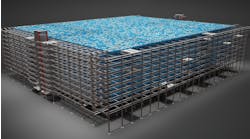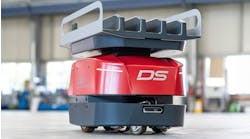Much of the news about artificial intelligence (AI) argues about the human jobs that AI will either eliminate or create, but very little attention is paid to the use of AI for correcting mistakes made by existing workers in critical business and operational processes, even though this is a huge problem.
One hears so little about this problem partly because it may be less glamorous than self-driving cars and real-time language translation, but probably more because it is a seemingly simple problem that AI, even from the big players, has struggled to solve effectively.
As a result, enterprises seeking to prevent negative business impacts from human data entry errors in applications like Supply Chain ERP, have been forced to rely on manual data review processes which are very costly and leave many errors undetected and unrepaired.
Rulex, the Italian-American AI pioneer has applied its unique proprietary, logic-based machine learning algorithms to develop a revolutionary solution to rapidly and reliably find, fix, and prevent human data input errors - automatically and with no need for data scientists or any a priori knowledge of error examples.
Rulex Robotic Data Correction (“RDC”) is a turn-key AI framework designed to be implemented and used by existing business, data, and process experts to detect, correct, and prevent human errors before they can impact business operations and performance.
One company’s labor savings from Robotic Data Correction for ERP: 36,000 manhours and $1.5M per year
Before Rulex Robotic Data Correction, more than 100 planners were each spending as much as two hours per day checking and correcting errors in new materials records, and cleaning up process problems caused by uncorrected errors.
Not Elementary, My Dear Watson
The company first tried to use IBM’s Watson AI to discover and predictively correct erroneous data entry patterns, and after months of complex experimentation, a team of experienced data scientists were unable to produce a reliable, cost-effective solution.
Then, the company discovered the unique AI provided by Boston-based Rulex Inc., a pioneer in logical machine learning.
The Rulex approach required no data science skills or iterative experimentation, and in just a few weeks proved its ability to accurately correct most of the existing errors in the system. Over the following year and a half, Rulex engineers collaborated with the company’s ERP planners to develop and implement a powerful, easy-to-use data correction solution.
Now in production use around the world, the Rulex solution is accurately correcting thousands of data entry errors every day. Empowered by this success, Rulex is now making Robotic Data Correction generally available to the Manufacturing, Finance, Insurance, and Healthcare industries to enable the correction of critical human errors across countless applications.
The Evolution of Turn–Key AI to Rapidly and Reliably Find and Fix Human Data Input Mistakes
From Manufacturing to Medicine, erroneous human inputs in critical applications can bring disastrous consequences. A supply chain planner entering erroneous shipping addresses or routing codes can cost millions of dollars, and a clinician entering incorrect codes for diagnoses or prescriptions can cost lives.
Why Identifying a High Percentage of Entry Errors Is Impossible for Humans
Humans make two kinds of mistakes in data entry: wrong values, e.g. a US zip code containing a letter, and wrong choices, e.g. a valid zip code that does not match an associated address.
Entry errors with incorrect or disallowed values are easy for software, or even humans to catch simply by knowing what the format for the individual entry should be. But wrong choices are much harder to find because knowing that the entry is wrong depends on the values in one or more other associated fields.
An erroneous entry choice is wrong because it is logically inconsistent with other data values, and it can only be detected by knowing all the possible valid values for all entries related to it. This is impossible for humans and, as it turns out, also quite difficult for conventional machine learning software. The subject entry might have hundreds of possible values, and it may be associated with five or ten other entries, each with hundreds of possible values.
To determine if a given entry is correct requires having defined logical rules for all the combinations of acceptable values in all related entries.
Conventional Machine Learning Cannot Correct Erroneous Human Input
Most conventional machine learning depends on highly skilled data scientists spending as much as 80% of their time analyzing historic data to develop a predictive hypothesis, and then through experimental iteration, selecting and testing an algorithm that will prove that hypothesis.
In the data, they must find examples of typically a single pattern that supports their hypothesis, e.g. which customer attributes might predict which product they will buy. This method has proven ineffective in solving the problem of predicting and correcting erroneous human input when it can be wrong for any of thousands of different reasons.
Rulex Robotic Data Correction, a Simple Solution to a Billion-Dollar Problem
In the supply chain and across a diverse array of other forms-driven business domains, including insurance, logistics, healthcare, and many more, billions of dollars are wasted every year on validating human data entry by employees, suppliers, customers, and partners, and on managing business process disruption caused by undetected errors.
Despite this burden, even the most celebrated artificial intelligence solutions have failed to provide a cognitive solution for understanding why data entries are incorrect and, based on the combination of other logically adjacent variables, what the correct values should be.
Rulex Robotic Data Correction, based on Rulex’s unique Logic Learning Machine algorithms, looks at the data the way a human expert would understand what is wrong with some combination of field entries, what should be corrected, and what the correction should be.
But, unlike that expert, Rulex can find and correct almost every wrong pattern in billions of field combinations in minutes. And it can do it for less than the salary of that expert.










